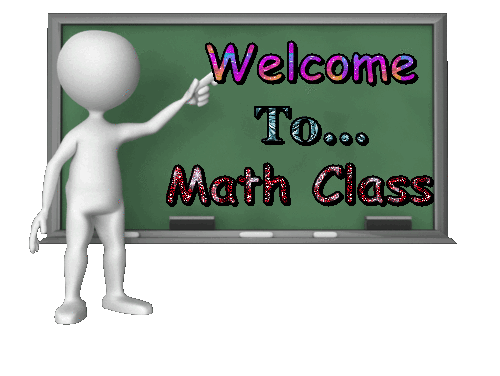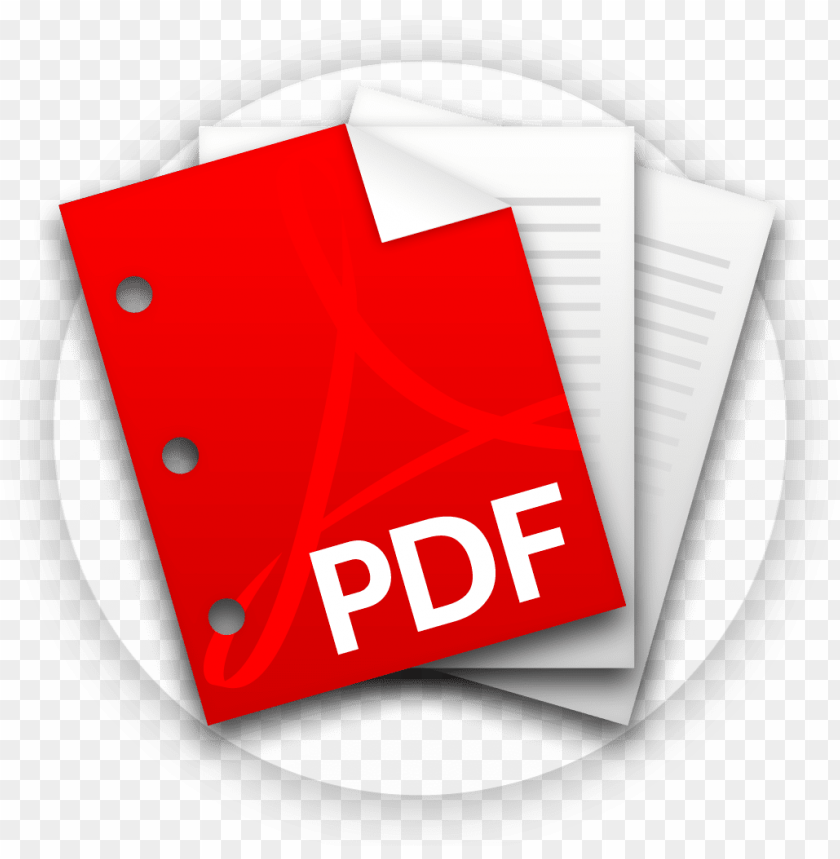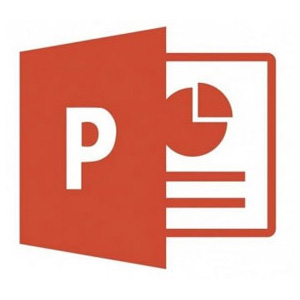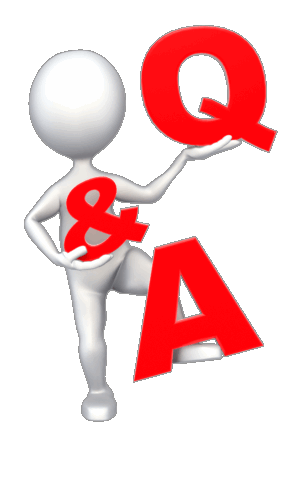Section outline
-


-

- All the students registered for this course have to enroll in BLC.
- Students can find all the course materials from BLC.
- All the students have to submit the soft copy of their "Assignment" in BLC under the assignment section created here and for this, they will be graded here.
- One discussion or feedback forum is created under each of the lecture students have to give their feedback on this forum and marks will be given for their feedback.
- Any announcement regarding the class will be posted on BLC. So they have to keep themselves always active on BLC.
- All the quizzes and presentations will be held on the face to face class and maybe a few of the class will be held on online (BLC) and it will be announced before the class.
- The question pattern and the syllabus for the quizzes, midterm, and final exam are given hereunder each of the sections (quizzes, midterm, and final).
- There are midterm and final exam preparation forums under these sections where students can discuss with each other about their midterm and final exam syllabus, any problem regarding the exam, etc.
-
 The calculus is planned to develop practical skills in differential and integral calculus. As well, it is intended to illustrate various applications of calculus to technical problems. Make students familiar with Limits, Curves, Derivatives, and Integrals. The rules of differentiation will be introduced. Applications of differential calculus to finding maxima and minima. Use the derivative to find tangent lines, Normal and asymptote to curves. Methods of integration will be introduced, with both definite and indefinite integrals being determined for a variety of functions. Understand and apply the procedures for integrating rational functions. Evaluate definite integral by using Gamma and Beta Function and also calculate the area and volume of solids objects.Make students able to solve problems that arise in the field of Engineering, Business, Economics, etc. using calculus and also enhance student’s critical thinking and problem-solving ability.
The calculus is planned to develop practical skills in differential and integral calculus. As well, it is intended to illustrate various applications of calculus to technical problems. Make students familiar with Limits, Curves, Derivatives, and Integrals. The rules of differentiation will be introduced. Applications of differential calculus to finding maxima and minima. Use the derivative to find tangent lines, Normal and asymptote to curves. Methods of integration will be introduced, with both definite and indefinite integrals being determined for a variety of functions. Understand and apply the procedures for integrating rational functions. Evaluate definite integral by using Gamma and Beta Function and also calculate the area and volume of solids objects.Make students able to solve problems that arise in the field of Engineering, Business, Economics, etc. using calculus and also enhance student’s critical thinking and problem-solving ability. -

- Students will be able to apply the concepts and methods described In the syllabus.
- They will know a number of applications.
- The text and class discussion will introduce the Concepts, Methods, Applications, logical arguments
- Students will practice and solve problems on daily assignments, and They will be Tested on Quizzes and the final. Moreover, It is recommended as the most significant mathematical course for engineering students totally all universities in the world. This course provides the basic tools and methods and includes sufficient theory to allow the methods to be used in circumstances not covered in the course. The course satisfies allocates with partial differentiation, maximum-minimum, multiple definite integral, gamma-beta function, complex number system, linear algebra, etc. The material in this course is inevitable for further study in mathematics and statistics.
-
 Methods to assess a Student’s performance in this course will consist of the following steps.
Methods to assess a Student’s performance in this course will consist of the following steps.Assessment Methods Weighting Description of Assessment Tasks Class Attendance 10% Discussions ( in-class & online ) will ensure, encourage & reward students’ activeness in learning and engagement with others. Quiz: (1st +2 nd +3rd )/3 15% Quizzes will consolidate
- their learning;
- test their basic concepts;
- reward students’ ability to solve problems
Presentations 10% Verbal Presentation by individual students will:
- test the students’ ability to present what they understand throughout the course;
- find out their lacks in expressing a known thing; make them accustomed to facing an audience;
- give them excellent preparation and skills for future professional meetings/conferences.
Assignments 10% Assignments will:
- enhance students’ ability to solve problems without the teacher’s help;
- help students’ group study or interaction with other students.
Midterm Examination 25% The midterm examination will justify students’ progress of subject-based knowledge. Final Examination 30% The final examination will test the students’ overall performance throughout the course. Total 100% Students' successfully complete the course - their learning;
-

Course Syllabus
Differential Calculus: Limits, Continuity and Differentiability, Successive Differentiation of various types of functions, Leibnitz Theorem, Rolle’s Theorem, Mean-Value Theorem, Taylor’s and Maclaurin’s theorems in finite and infinite forms, Lagrange’s And Cauchy’s Form of Remainders, expansion of functions, evaluation of indeterminate forms of L’Hospital rule. Partial Differentiation. Euler’s Theorem, Tangent, and normal sub-tangent and subnormal in Cartesian and polar coordinates, determination of maximum and minimum values of functions. Curvature asymptotes. Curve tracing.Integral Calculus: Integration by the method of substitution. Standard integrals, integration by successive reduction, definite integrals, its properties, and use in summing series. Walli’s formulae, improper integrals. Beta function and Gamma function, Area under a plane curve and area of a region enclosed by two curves in Cartesian and polar coordinated, volumes, and surface areas of solids of revolution.
-

Subject
Text Book
Reference Book
Calculus 1. Advanced Calculus By ROBERT C. Wrede
2. Differential & Integral Calculus By A. Matin -

There are lots of work you can do in the BLC platform but if you don't know how to perfectly use this platform it is difficult to operate it. For your convenience to operate BLC here I prepared a tutorial on usage guidelines. I think this helps you to operate BLC more comfortably.
Complete Guideline Especially on Exam -

Dear Students,
Here you can see your online class schedule as your routine and if you want to join my online class just click on (Click Here, Meet Link). Also, you can provide your attendance from the attendance section and if you want to fix a time your counseling with me you can also do it from here.


Section
Class Schedule
Meet Link
PC-A (EEE)
Sunday (11.30) + Tuesday (11.30)
Click Here
-

-

Chapter Name of the Chapter
Lecture Note

PowerPoint Slides

01 Limit, Continuity, & Differentiability
Click Here
Click Here
02 Differentiation
Click Here
Click Here
03 Partial Differentiation
Click Here
Click Here
04 Application of Differentiation
Click Here
Click Here
05 Various Theorem & It's Application
Click Here
Click Here
06 Integration (Definite & Indefinite)
Click Here
Click Here
07 Gamma & Beta Function
Click Here
Click Here
08
Multiple Integration
Click Here
Click Here
09 Application of Integration
Click Here
Click Here
*********** Chapter Wise Problem List ***********
-
-

-

At the very beginning of each semester, it needs to introduce myself to the students. It's also important to get a clear understanding of the students' abilities, performance, strengths, and weaknesses at the very beginning of the semester. As a result, it's easy to reach the students. So a nice introductory class help to buildup connection between students and teacher which make easier to continue the whole course.
When the students are starting a new course, they have some common questions like that,
a) Why they read this course?
b) Have any real-life application of this course?
I think these are very important questions and we must do fulfill their demand.
Hence, in my introductory class, I always try to buildup a clear understanding among the students and try to reach their emotion, their feelings, their strengths, and weaknesses. Clearly I try to show the necessity of this course and real-life application of this course.So, I think at the very beginning of the semester, a good introductory class helps to make my course easier than the other classes.

- Introduce myself among the students
- Try to understand the expectation of the students from the teacher and also from the course
- Deliver the real-life outcomes of this course
- Show the detail course plan

Taking class using the PPT slide and arrange a Question & Answer forum about the understanding and the opinion regarding this course.

- Able to know the overview of this course
- Application of this course in real life
- Course activity

PowerPoint Slide of Introductory Class.
Supportive Video About Calculus
-
-

Dear Students,
In this section, you can share your opinion or problem with this topic. Also, for how much you have learned about this topic, I will provide some questions and you will give your feedback.
-
-


-


In this chapter, we will study the limit which is the core tool of calculus, and all other calculus concepts are based on it. A function can be undefined at a point, but we can think about what the function "approaches" as it gets closer and closer to that point (this is the "limit"). Also, the function may be defined at a point, but it may approach a different limit. There are many, many times where the functional value is the same as the limit at a point. The limit is used to define continuity, derivatives, and integral of a function.

1. The basic concept of limit and continuity.
2. Fundamental Properties of limit and continuity.
3. Various indeterminate forms.
4. Limiting value at a point of discontinuity.
Taking class using the PPT slide and provide the PDF file of this lecture. Also, provide the relevant video tutorial of this topic. Try to engage the students to give some tasks in a group or individual. At the end of the class must have a question & answer session.

State the definition of continuity and use the definition to ascertain the continuity or non-continuity of a function at a point
Explain and illustrate ways in which function can be discontinuous.
Recognize continuous functions and recognize discontinuous functions
Make a continuous extension of a function
Use limits to determine the existence and location of horizontal asymptotes
Evaluate and work with limits x → ±∞ by working with dominant terms

Questioning-answering, the group or individual classwork, assigning home tasks related to class content.

- Lecture Note (PDF)on This Topic.
- PowerPoint Slide on This Lecture.
- Video Tutorial on This Topic.
- Q & A Forum
- Adaptive or Self Learning Activity.
-

Lecture 4
(26.01.21)
Lecture 5
(31.01.21)
Lecture 6
(02.02.21)
Lecture 7
(08.02.21)
Click Here
Click Here
Click Here
Click Here
-

Dear Students,
In this section, you can share your opinion or problem with this topic. Also, for how much you have learned about this topic, I will provide some questions and you will give your feedback.
-

************** Test Your Learning ***************
Dear Students, From here you can test your learning regarding this chapter.
-
-


-


Many real-world phenomena involve changing quantities—the speed of a rocket, the inflation of the currency, the number of bacteria in a culture, the shock intensity of an earthquake, the voltage of an electrical signal, and so forth. In this chapter, we will develop the concept of a “derivative,” which is the mathematical tool for studying the rate at which one quantity changes relative to another. The study of rates of change is closely related to the geometric concept of a tangent line to a curve, so we will also be discussing the general definition of a tangent line and methods for finding its slope and equation.

- Rules of differentiation
- Derivatives of Elementary Functions
- Sum and Difference Rules
- Higher-Order Derivatives
- The Product and Quotient Rules
- Logarithmic Differentiation
- Parametric Equation
- Successive derivative
- Leibnitz’s Theorem

Taking class using the PPT slide and provide the PDF file of this lecture. Also, provide the relevant video tutorial of this topic. Try to engage the students to give some tasks in a group or individual. At the end of the class must have a question & answer session.

- Find the derivative using the constant rule, the power rule, the constant multiple rules, and sum and difference rules, quotient rule, and chain rule
- Find the velocity, speed, and acceleration of an object that is moving in a straight line
- Find the slope of a curve by the differential coefficient
- Find the marginal revenue, marginal cost, and marginal profit for a product
- Identify the shape of a graph of a function by using the slope of the tangent to the curve.
- Find out the rate at which production cost changes with the quantity of a product
- Take the decision of minimization of cost and maximization of profit of a manufacturing company using a derivative.

Questioning-answering, the group or individual classwork, assigning home tasks related to class content.

- Lecture Note (PDF)on This Topic.
- PowerPoint Slide on This Lecture.
- Video Tutorial on This Topic.
- Q & A Forum
- Adaptive or Self Learning Activity.
-

Lecture 8
(14.02.21)
Lecture 9
(23.02.21)
Lecture 10
(28.02.21)
Lecture 11
(04.03.21)
Lecture 12
(07.03.21)
Lecture 13 (09.03.21)
Click Here
Click Here
Click Here
Click Here
Click Here
Click Here
-

Dear Students,
In this section, you can share your opinion or problem with this topic. Also, for how much you have learned about this topic, I will provide some questions and you will give your feedback.
-
************** Test Your Learning ***************
Dear Students, From here you can test your learning regarding this chapter.
-
-


-


In mathematics, a partial derivative of a function of several variables is its derivative with respect to one of those variables, with the others held constant (as opposed to the total derivative, in which all variables are allowed to vary). Partial derivatives are used in vector calculus and differential geometry.

- Basic of Partial Differentiation
- Successive Partial Derivatives
- Geometrical Meaning
- Symmetric Function
- Euler’s theorem on Homogeneous functions

Taking class using the PPT slide and provide the PDF file of this lecture. Also, provide the relevant video tutorial of this topic. Try to engage the students to give some tasks in a group or individual. At the end of the class must have a question & answer session.

- To define a function of several variables
- To calculate the partial derivatives of a function of two and more than two variables variables
- To determine the higher-order derivatives of a function of two variables
- To use alternative notations for partial derivatives

Questioning-answering, the group or individual classwork, assigning home tasks related to class content.

- Lecture Note (PDF)on This Topic.
- PowerPoint Slide on This Lecture.
- Video Tutorial on This Topic.
- Q & A Forum
- Adaptive or Self Learning Activity.
-
-

Dear Students,
In this section, you can share your opinion or problem with this topic. Also, for how much you have learned about this topic, I will provide some questions and you will give your feedback.
-
************** Test Your Learning ***************
Dear Students, From here you can test your learning regarding this chapter.
-
-


-


In real life, everyone wants to the maximum output for minimum input such as a manufacturer wants to maximize her profits, a businessman wishes to minimize the cost of production, a contractor wants to minimize his costs subject to doing a good job, a physicist wants to find the wavelength that produces the maximum intensity of radiation and many more. In this chapter, we will study problems where we wish to find the maximum or minimum values of functions and also show how differentiation can be used to find the maximum and minimum values of a function.

- Special points on a curve
- Tangent and normal of a point on the curve.
- Working the rule for finding maxima and minima
- Mathematical problems

Taking class using the PPT slide and provide the PDF file of this lecture. Also, provide the relevant video tutorial on this topic. Try to engage the students to give some tasks in a group or individual. At the end of the class must have a question & answer session.

Finding a maximum or a minimum of a function is clearly important in an everyday experience such as
A manufacturer wants to maximize her profits.
- A businessman wishes to minimize the cost of production.
- A contractor wants to minimize his costs subject to doing a good job.
- A physicist wants to find the wavelength that produces the maximum intensity of radiation.

Questioning-answering, the group or individual classwork, assigning home tasks related to class content.

- Lecture Note (PDF)on This Topic.
- PowerPoint Slide on This Lecture.
- Video Tutorial on This Topic.
- Q & A Forum
- Adaptive or Self Learning Activity.
-
-

Dear Students,
In this section, you can share your opinion or problem with this topic. Also, for how much you have learned about this topic, I will provide some questions and you will give your feedback.
-
************** Test Your Learning ***************
Dear Students, From here you can test your learning regarding this chapter.
-
-


-


In calculus, Rolle's theorem or Rolle's lemma essentially states that any real-valued differentiable function that attains equal values at two distinct points must have at least one stationary point somewhere between them—that is, a point where the first derivative (the slope of the tangent line to the graph of the function) is zero. The theorem is named after Michel Rolle.

- Concept and Mathematical problem of Rolle's Theorem
- Concept and Mathematical problem of Mean value Theorem
- Concept and Mathematical problem of Taylors Theorem

Taking class using the PPT slide and provide the PDF file of this lecture. Also, provide the relevant video tutorial on this topic. Try to engage the students to give some tasks in a group or individual. At the end of the class must have a question & answer session.

- To define a function of several variables
- To calculate the partial derivatives of a function of two and more than two variables variables
- To determine the higher-order derivatives of a function of two variables
- To use alternative notations for partial derivatives

Questioning-answering, the group or individual classwork, assigning home tasks related to class content.

- Lecture Note (PDF)on This Topic.
- PowerPoint Slide on This Lecture.
- Video Tutorial on This Topic.
- Q & A Forum
- Adaptive or Self Learning Activity.
-
-

Dear Students,
In this section, you can share your opinion or problem with this topic. Also, for how much you have learned about this topic, I will provide some questions and you will give your feedback.
-
************** Test Your Learning ***************
Dear Students, From here you can test your learning regarding this chapter.
-
-


-


Integration is a mathematical technique that is used to find something whose rate of change is known. In the 17th century, Newton and Leibnitz discovered the idea of integration. It has a wide range of applications in engineering, medicine, architecture, economics, etc. The objectives of this chapter are to discuss integration and provide standard integration techniques.

- Indefinite Integration
- Definite Integration
- Classification of Integration
- Simple Formula Based Problems
- Method of substitution
- Some Important Standard Integrals
- Integration by Parts
- Integration of Trigonometric Functions

Taking class using the PPT slide and provide the PDF file of this lecture. Also, provide the relevant video tutorial on this topic. Try to engage the students to give some tasks in a group or individual. At the end of the class must have a question & answer session.

- Find displacement from velocity and velocity from acceleration.
- Calculate areas under curves, volumes of solids, arc lengths.
- Evaluate the center of mass, a moment of inertia.
- Determine work is done by a force, electric charge, etc.

Questioning-answering, the group or individual classwork, assigning home tasks related to class content.

- Lecture Note (PDF)on This Topic.
- PowerPoint Slide on This Lecture.
- Video Tutorial on This Topic.
- Q & A Forum
- Adaptive or Self Learning Activity.
- Indefinite Integration
-

Lecture 19
(03.04.21)
Lecture 20
(06.04.21)
Lecture 21
(11.04.21)
Lecture 22
(13.04.21)
Click Here
Click Here
Click Here
Click Here
-

Dear Students,
In this section, you can share your opinion or problem with this topic. Also, for how much you have learned about this topic, I will provide some questions and you will give your feedback.
-
-


-


Beta function: In 1968, a researcher, Gabriele Veneziano at CERN(a European particle accelerator lab) observed that beta function describes many properties of strong nuclear force. Beta distribution where the beta function is used to determine the average time of completing selected tasks in time management problems. Stochastic urn process and beta function: In probability theory, the beta function is used in the preferential attachment process. A preferential attachment process is where a certain quantity is distributed among individuals on the basis of the quality individual already possesses. Gamma function is used in gamma distribution which is used to determine time-based occurrences, such as the life span of an electronic component, etc. Packing problem and Gamma function: Which fits better – “the n-ball in the n-cube or the n-cube in the n-ball”.

- Properties
- The relation between gamma and beta function
- Work out problems
- Integrals

Taking class using the PPT slide and provide the PDF file of this lecture. Also, provide the relevant video tutorial on this topic. Try to engage the students to give some tasks in a group or individual. At the end of the class must have a question & answer session.

- To Identify Gamma & Beta functions
- To evaluate specialized forms of improper integrals
- To compute special integrals involving cosine and sine function.

Questioning-answering, the group or individual classwork, assigning home tasks related to class content.

- Lecture Note (PDF)on This Topic.
- PowerPoint Slide on This Lecture.
- Video Tutorial on This Topic.
- Q & A Forum
- Adaptive or Self Learning Activity.
-
-

Dear Students,
In this section, you can share your opinion or problem with this topic. Also, for how much you have learned about this topic, I will provide some questions and you will give your feedback.
-
-


-


The multiple integrals are a generalization of the definite integral to functions of more than one real variable, for example, f(x, y) or f(x, y, z). Integrals of a function of two variables over a region in R2 are called double integrals, and integrals of a function of three variables over a region of R3 are called triple integrals. Multiple Integral also known as iterated integrals because we integrate more than once.

- Double integral
- Triple integral
- Application of integration

Taking class using the PPT slide and provide the PDF file of this lecture. Also, provide the relevant video tutorial on this topic. Try to engage the students to give some tasks in a group or individual. At the end of the class must have a question & answer session.

- Area of a 2D region
- Volume
- Mass of 2D plates
- Force on a 2D plate
- Surface Area

Questioning-answering, the group or individual classwork, assigning home tasks related to class content.

- Lecture Note (PDF)on This Topic.
- PowerPoint Slide on This Lecture.
- Video Tutorial on This Topic.
- Q & A Forum
- Adaptive or Self Learning Activity.
-
-

Dear Students,
In this section, you can share your opinion or problem with this topic. Also, for how much you have learned about this topic, I will provide some questions and you will give your feedback.
-
-


-


The mathematical term 'Area' can be defined as the amount of two-dimensional space taken up by an object. The use of the area has many practical applications in building, farming, architecture, science, and even deciding how much paint you need to paint your bedroom. The area of a shape can be determined by placing the shape over a grid and counting the number of squares that the shape covers, like in this image:
The area of many common shapes can be determined using certain accepted formulas. But it is not possible to determine the area of a zigzag region by the normal formula. The issue will be addressed by Integration.
- Area formula for the Cartesian equation
- Area under Curves
- The area under x and y-axis

Taking class using the PPT slide and provide the PDF file of this lecture. Also, provide the relevant video tutorial on this topic. Try to engage the students to give some tasks in a group or individual. At the end of the class must have a question & answer session.

- Able to find an area of a regular and irregular shape

Questioning-answering, the group or individual classwork, assigning home tasks related to class content.

- Lecture Note (PDF)on This Topic.
- PowerPoint Slide on This Lecture.
- Video Tutorial on This Topic.
- Q & A Forum
- Adaptive or Self Learning Activity.
-
-
-

-
Necessary Instruction for Final Exam MCQ Part
Date: 22.06.2021; Time: At 10.00 am
-
-
